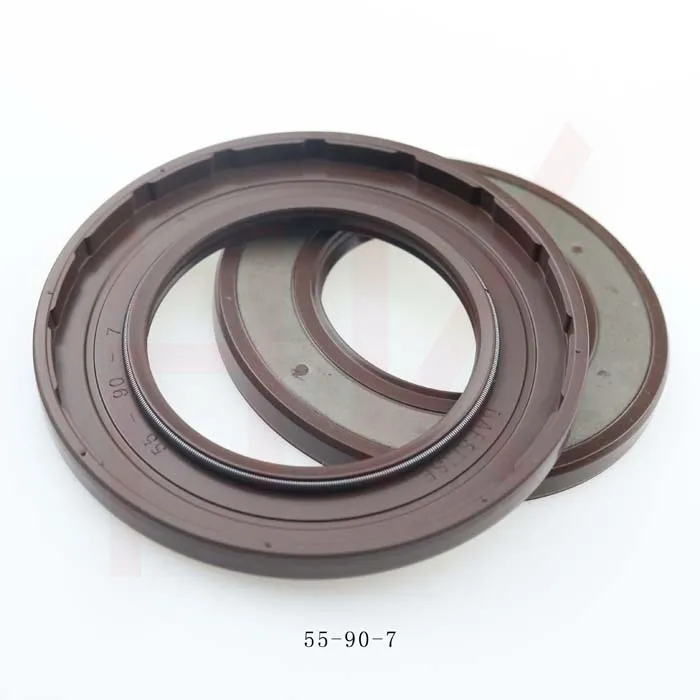ডিসে. . 26, 2024 18:37 Back to list
Hydraulic Cylinder Wiper Seal for Optimal Performance and Durability
Understanding Wiper Seals in Hydraulic Cylinders
Hydraulic systems play a crucial role in various industrial applications, from manufacturing machinery to construction equipment. At the core of these hydraulic systems are hydraulic cylinders, which convert hydraulic energy into mechanical force. A critical component of hydraulic cylinders is the wiper seal, an often-overlooked yet vital element that ensures the efficiency and longevity of the hydraulic system.
What is a Wiper Seal?
A wiper seal, also known as a dust seal or scraper seal, is designed to prevent contaminants from entering the hydraulic cylinder while simultaneously ensuring the hydraulic fluid remains contained within the system. These seals are crucial in maintaining the operational integrity of hydraulic cylinders, as they deal with harsh environments that can expose them to dirt, debris, and moisture.
Functionality of Wiper Seals
The primary function of a wiper seal is to act as a barrier. When the rod of the hydraulic cylinder extends or retracts, the wiper seal scrapes off any dust or contaminants that might cling to the rod. This action minimizes the risk of contamination that could harm the internal components of the cylinder. By preventing debris from entering, wiper seals help mitigate wear and tear, reduce maintenance needs, and prolong the life of hydraulic systems.
Wiper seals typically feature a lip that faces outward, ensuring that any debris or moisture is pushed away from the cylinder. The effectiveness of the seal relies on its design, material, and proper installation, as poorly fit or damaged wiper seals can lead to significant problems, including hydraulic fluid leakage or contamination ingress.
Material Considerations
Wiper seals are made from various materials, each offering unique properties suited for different applications. Common materials include polyurethane, nitrile rubber, and elastomers.
1. Polyurethane Known for its durability and resistance to abrasion, polyurethane is an excellent choice for applications that involve high wear conditions. Its flexibility allows it to conform to various rod sizes and shapes.
wiper seal hydraulic cylinder

2. Nitrile Rubber This material is favored for its excellent resistance to oils and fuels, making it suitable for hydraulic applications where exposure to such substances is likely.
3. Elastomers A broad category that can offer customized solutions based on specific environmental conditions, including temperature variations and chemical exposure.
The selection of materials for wiper seals must align with the working conditions, including temperature ranges, chemical exposures, and potential contaminants.
Advantages of Wiper Seals
Integrating wiper seals in hydraulic cylinders offers numerous advantages. Firstly, they help maintain the cleanliness of hydraulic systems, which is essential for the efficient performance of the equipment. By keeping contaminants away, wiper seals contribute to smoother operation and reduced wear on the internal components.
Secondly, wiper seals can significantly lower maintenance costs. Regular contamination of hydraulic fluids can lead to costly repairs and downtime. By employing effective wiper seals, companies can minimize the frequency of maintenance and extend the service life of hydraulic cylinders.
Lastly, wiper seals can improve overall safety. Hydraulic failures can lead to accidents and pose risks to operators. Maintaining the integrity of hydraulic systems through effective sealing can reduce such risks, ensuring a safer working environment.
Final Thoughts
In conclusion, wiper seals play an indispensable role in the functionality and longevity of hydraulic cylinders. By effectively preventing contaminants from entering the hydraulic system, these seals help maintain the integrity of the cylinder, reduce maintenance costs, and improve safety in operations. As industries continue to innovate and seek efficiency, the significance of wiper seals will only grow. Therefore, understanding their function, material considerations, and advantages is crucial for anyone involved in the design, maintenance, or operation of hydraulic systems. Investing in high-quality wiper seals is vital for ensuring hydraulic systems operate at their best, safeguarding both machinery and personnel.
-
TCN Oil Seal Metal Ring Reinforcement for Heavy Machinery
NewsJul.25,2025
-
Rotary Lip Seal Spring-Loaded Design for High-Speed Applications
NewsJul.25,2025
-
Hydraulic Cylinder Seals Polyurethane Material for High-Impact Jobs
NewsJul.25,2025
-
High Pressure Oil Seal Polyurethane Coating Wear Resistance
NewsJul.25,2025
-
Dust Proof Seal Double Lip Design for Construction Equipment
NewsJul.25,2025
-
Hub Seal Polyurethane Wear Resistance in Agricultural Vehicles
NewsJul.25,2025
-
The Trans-formative Journey of Wheel Hub Oil Seals
NewsJun.06,2025
Products categories
















